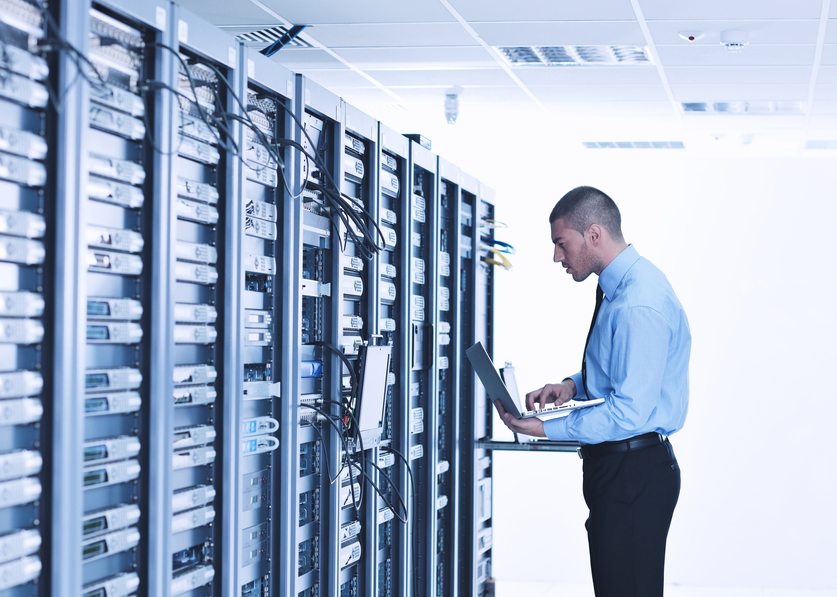The servers are the heart of your corporate network. It is through them that all the data, information and competitive intelligence of your company are processed, so it is important to pay attention to some important issues while structuring your data center.
Creating an environment in which the machines are well kept and the IT staff can work whenever needed is the basic premise for maintaining your server room protected from damage or against a virtual invasion, for example. That’s why we brought to you a step by step guide to structure your server room in a professional, secure and accessible way. Let’s begin?

Define the room
The environment in which the servers will be allocated must have the appropriate size for all equipment, wires, cables and also for your staff to be able to move around when any adjustment or maintenance is needed. The ceiling height must be between 11.5 and 18 feet high, which can provide a good airflow.
Create the structure
To make your Data Centre organized and well maintained, it is a good idea to buy metal shelves and cabinets – the well-known racks – to install the physical machines. It is also a good idea to elevate the floor level so cabling can be organized underneath it all, and also provide better ventilation for the environment. The ideal for a server room is a rubber floor, since it avoids the creation of static, which can be passed on to the equipment.
Chilled air is vital in a server room, because the excess heat can lead to machines overheating. An average temperature of 70 °F is ideal, and you can control this through a simple thermometer.
In very humid locations, installing a dehumidifier in the room can help maintain machines dry and free from fungi, which may affect the servers. A powerful electrical installation is also vital, with an individual outlet for each equipment, without shares.
Create access procedures
The server room is the center of your business intelligence storage, therefore it should not be accessible for everyone. Creating security and access procedures to the server room is an extra guarantee for your business, since only authorized and qualified people to interact with the machines will have that privilege. A classic example of damage is with employees responsible for cleaning, usually outsourced, which almost never receive adequate training to do proper cleanup of the site.
Installing a biometric lock door is still the best solution to keep your server room safe, since you will know exactly who have access and when the access occurred. Keys can be easily stolen, and the locks can be forced open, leaving your business vulnerable.
While structuring your data server room, the more attention you put into each detail the less chance of risks to damaging equipment you will find, whether caused by carelessness or by natural disasters, so investing in a quality structure, one that is actually safe and does not need modifications on the long run. Remember that it is possible that the number of servers may need to be increased, so leave a room for future expansion of your network.
Want to know more about the subject?
After structuring your room with damage prevention servers it is time to manage these equipment. To learn more about the subject, access our two articles on servers monitoring:
4 Tips to monitor servers more efficiently
Why should managing servers be an IT priority?


